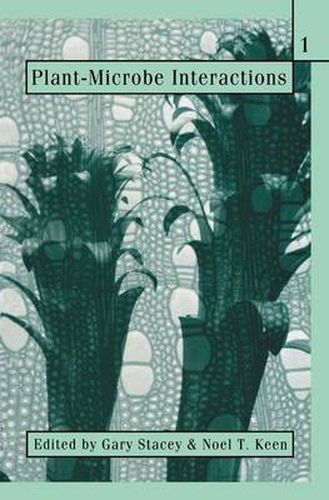Readings Newsletter
Become a Readings Member to make your shopping experience even easier.
Sign in or sign up for free!
You’re not far away from qualifying for FREE standard shipping within Australia
You’ve qualified for FREE standard shipping within Australia
The cart is loading…






This title is printed to order. This book may have been self-published. If so, we cannot guarantee the quality of the content. In the main most books will have gone through the editing process however some may not. We therefore suggest that you be aware of this before ordering this book. If in doubt check either the author or publisher’s details as we are unable to accept any returns unless they are faulty. Please contact us if you have any questions.
Plant-Microbe Interactions, Volume 1 Many plant-microbe interactions have agronomic importance because of either beneficial (e.g., nitrogen fixation or biocontrol) or detrimental (e.g., pathogen esis) effects. Although these systems have been the subjects of scientific re search for many years, recently there has been a tremendous increase in our knowledge of them. The increases in this research have followed a similar general increase in plant science research. Classical plant science research disciplines (e.g., agronomy, breeding, plant physiology, systematics, etc.) have been affected by an increased focus on molecular biology. These new technologies, as well as advances in other areas, have the effect of blurring the traditional borders between research disciplines. Another factor influencing the development of this research is the increased attention given to environmental issues. These concerns have been brought about by debate over the release of genetically modified organisms and the general concern over environmental quality. Thus, research areas focused on plant-microbe interactions are presently in a period of great excitement and growth that shows every sign of continuing far into the future. As in most research areas, the rate of advance and breadth of disciplines involved in the study of plant-microbe interactions make it impossible for the average researcher or student to stay abreast of the primary scientific literature.
$9.00 standard shipping within Australia
FREE standard shipping within Australia for orders over $100.00
Express & International shipping calculated at checkout
This title is printed to order. This book may have been self-published. If so, we cannot guarantee the quality of the content. In the main most books will have gone through the editing process however some may not. We therefore suggest that you be aware of this before ordering this book. If in doubt check either the author or publisher’s details as we are unable to accept any returns unless they are faulty. Please contact us if you have any questions.
Plant-Microbe Interactions, Volume 1 Many plant-microbe interactions have agronomic importance because of either beneficial (e.g., nitrogen fixation or biocontrol) or detrimental (e.g., pathogen esis) effects. Although these systems have been the subjects of scientific re search for many years, recently there has been a tremendous increase in our knowledge of them. The increases in this research have followed a similar general increase in plant science research. Classical plant science research disciplines (e.g., agronomy, breeding, plant physiology, systematics, etc.) have been affected by an increased focus on molecular biology. These new technologies, as well as advances in other areas, have the effect of blurring the traditional borders between research disciplines. Another factor influencing the development of this research is the increased attention given to environmental issues. These concerns have been brought about by debate over the release of genetically modified organisms and the general concern over environmental quality. Thus, research areas focused on plant-microbe interactions are presently in a period of great excitement and growth that shows every sign of continuing far into the future. As in most research areas, the rate of advance and breadth of disciplines involved in the study of plant-microbe interactions make it impossible for the average researcher or student to stay abreast of the primary scientific literature.